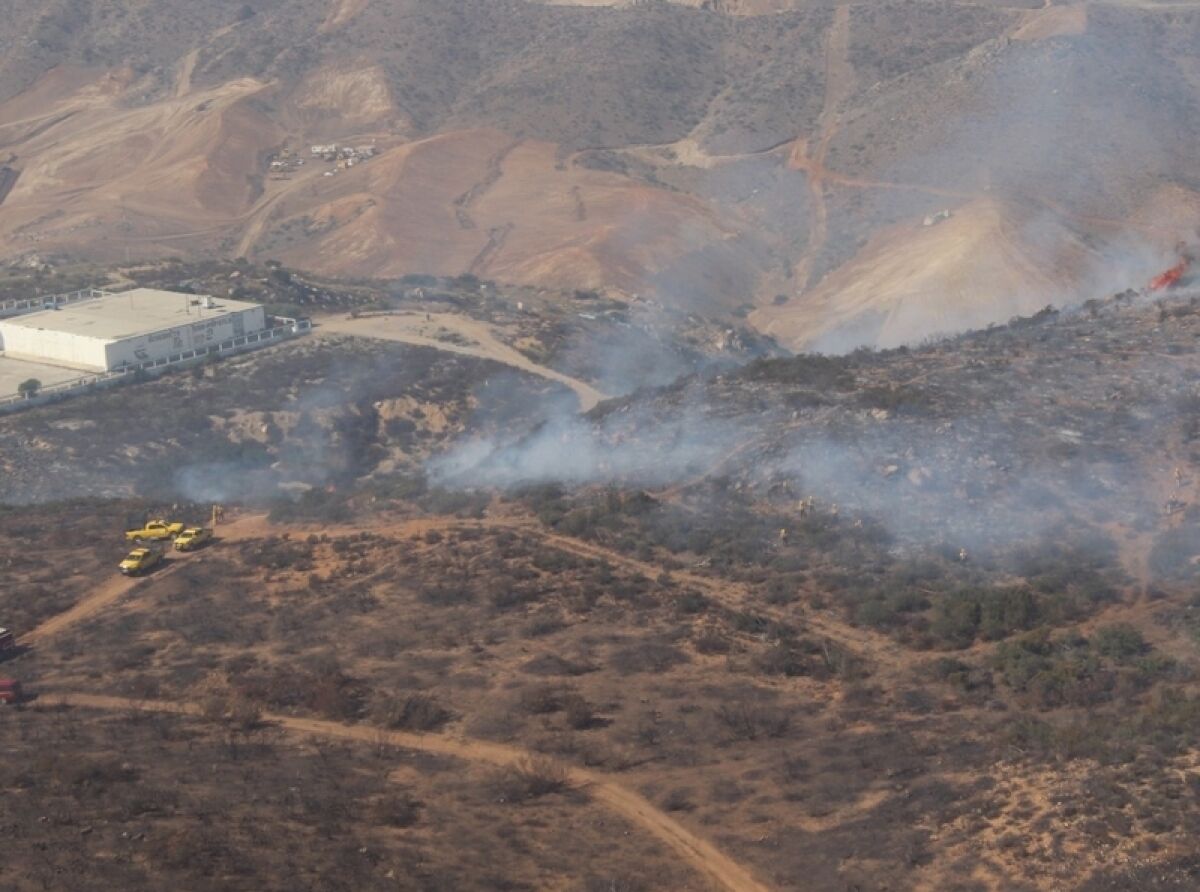Fires are treated depending on whether it affects structures or vegetation, however the interface fire crosses the line between the forest and the urban,
so the attention is provided by firefighters and combatants prioritizing the safety of the population. The accumulation of dead vegetation in patios or backyards, the burning of garbage, the use of pyrotechnics, or deficiencies in electrical wiring, are some factors that can originate an urban-forest interface fire. Cabins, houses, villages, towns, industries or any structure with inhabitants found in natural areas or on the outskirts of cities are called urban-forest interface areas.
The term interface refers to when two areas of different conditions and interests coincide, in this case forest areas with human settlements, and where both areas are affected when a fire passes the limits and reaches the other side.
Whatever the reason or the place of origin, when there is a fire, the priority is the safety of the population and for this reason sometimes they must be evacuated.
Among the risks run are damage to homes or property in general, damage to health from smoke, and of course the possible loss of human life due to fire or its effects.
Fires are treated according to characteristics. In the urban part they are attended by firefighters and their training is to put out the fire in structures, ridges, parks or others. To report an urban fire, call the emergency line 911.
In forest areas, personnel are called combatants and they are trained to control fire in natural areas. To report fires in forested areas the service number is 800 462 3634, or you can call 911.
Faced with the urban-forest interface fires, both firefighters and combatants attend to the situation.

Risk Factors that Increase the Possibility of an Interface Fire
Only 2% of wildfires are caused by natural causes such as thunderstorms. The rest has to do with human activities, whether intentional or accidental. In the case of interface fires, the factors that increase the risk of fires are:
Accumulation of dead vegetation in patios or backyards of homes.
Burning garbage, branches, or leaves that are obtained from cleaning gardens, religious festivities, or of another type.
Use of fireworks near forest areas.
Deficiencies in the electrical wiring system, which when touching ground can cause a fire from the sparks generated.
Deficiencies in gas intakes or tanks in poor condition (leaking.)
If you live in an interface area, prevention is the best protection!
Dry vegetation works as fuel for fire, burns easily, and expands very quickly, especially when the weather is very hot and there is wind. Therefore, and for your own safety, protect your life and your home in the following way:
Clean the dead vegetation around your house for at least 30 meters surrounding.
Do not throw or accumulate litter, dry grass, or branches.
Keep roofs clear of dead vegetation.
Avoid burning this vegetation, it is better to identify a site where the material can be composted or shredded so that you can move it to that place.
If you have a garden, use plants that remain green all year round.
Identify gas and electricity connections and prevent the accumulation of living or dead vegetation around them.
Establish a protocol with your neighbors on how to act in the event of a fire.
Together identify evacuation routes and safety zones devoid of vegetation.
Locate cisterns or water intakes available for the use by personnel who attend the emergency.
Establish warning systems such as whistles or sirens.
Remember, the priority is your life and that of your family!
During a fire, structures or property are likely to be damaged, however, they can recover; loss of your life and/or that of your family can not. For this reason, it is important that in the event of a fire you pay attention to the Civil Protection recommendations, such as evacuating the area.
Also, in the event of a fire, we recommend:
Close gas outlets and disconnect the electricity from your house.
Keep important documents in an evacuation backpack.
If Civil Protection requests to evacuate, do so and notify your neighbors.
Clear the access roads of vehicles or objects that could interrupt the passage of emergency units.
Do not try to put out the fire, this activity requires specialized training and equipment.
If you stay near the fire area, wear a mask and stay away from the smoke. Take into account that when the smoke is generated by plastics and garbage it is even more dangerous to health than the smoke from a natural forest fire.
After the Fire
Return home when the competent authorities indicate that it is okay.
Review and identify possible damage and therefore potential risks to the infrastructure.
If possible, support neighbors who require it.
Forest fire fighting personnel protect ecosystems and human life. Combatant personnel are trained to protect citizens as a priority from the risk generated by forest fires.
In this sense, so that the population is not affected by uncontrolled fire, year after year the combatant personnel carry out preventive activities such as black lines, fire break gaps, and fuel management in areas defined as high risk (roadsides, forested areas near towns and important infrastructures.) All of this is done prior to the critical fire season.
If you know someone who finds this information useful, share it!

